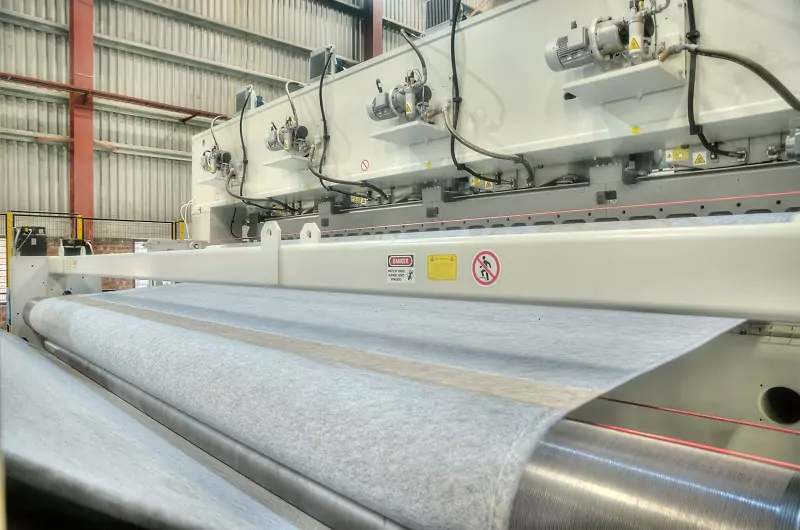A new generation of environmentally friendly materials, non-woven cloth has the qualities of being moisture-proof, breathable, flexible, high-quality, light, and simple to disintegrate.
It also has a variety of rich colors, a cheap price, and the ability to be recycled. High refractive index slices, short fibers, or filaments are used to create the fibers using mechanical or airflow processes.
The fibers are then strengthened through spin lacing, needle punching, or hot rolling before being finished. The benefits of the new fiber product with a soft, permeable, and flat structure are their toughness, durability, silkiness, and softness. They also do not generate fibrous debris.
They also function as a form of reinforcing material and offer a cotton-like feel that is comparable to non-woven and cotton textiles.
Benefits Of Using Non-Woven Fabric
1. Insubstantial
The percentage of polypropylene non-woven fabric used as the primary raw material is merely 0.9, or just three-fifths that of cotton. The polypropylene non-woven fabric also has a pleasant feel and a fleecy texture.
2. Non-toxic and non-irritating
The product is produced in compliance with FDA guidelines using food-grade raw materials, is steady in performance, is odorless, and does not irritate the skin.
3. Antibacterial and anti-chemical agents
Polypropylene is a chemically blunt material that cannot be eaten by insects and can isolate the erosion of bacteria and insects in liquids. Antibacterial, alkali corrosion, and completed goods do not impact the toughness resulting from erosion.
4. Environmentally Friendly
Most non-woven textiles are made of polypropylene, which is better for the environment than polyethene, which is used to make plastic bags. Despite the fact that the two chemicals share a name, their chemical compositions are very different.
Plastic bags take 300 years to dissolve because of the polyethene chemical molecular structure’s great durability and extreme difficulty in degradation.
Since polypropylene’s chemical structure is fragile and its molecular chain is readily broken, it may be successfully broken down and enter the next environmental cycle in a non-toxic state. Within 90 days, a non-woven shopping bag can degrade entirely.
- Tenderness: It is made up of tiny (2–3D) strands that resemble hot melting bonding molding spots. The completed item has a medium level of softness and comfort.
- Antibacterial attributes: The product can isolate the evaporation of bacteria and insects in the liquid and is not moldy. It also removes water.
- Good physical characteristics: It is constructed of thermally bonded polypropylene spinning that is immediately put into a mesh. The product has more strength than typical staple fiber goods. In both the vertical and horizontal directions, the strength is comparable and non-directional.
- Breathable and Water repellent: Polypropylene chips are non-absorbent and devoid of water, and they are also breathable. The completed item is made entirely of fiber and has high water resistance. It has high airflow and is porous. The material is simple to wash and simple to maintain dry.
Categories Of Non-Woven Fabric

Spiny non-woven cloth
The spinning procedure involves spraying a high-pressure water jet over one or more layers of the fiber network in order to intertwine the fibers and reinforce and increase the resilience of the system.
Heat-bonded non-woven fabric
The insertion of fiber mesh or powder hot melt bonding reinforcement materials, fiber mesh after heating melting cooling reinforcement into cloth, is known as thermal bonding non-woven fabric.
The pulp enters a non-woven fabric net
Dust-free paper and dry non-woven cloth for papermaking are other names for the nonwoven fabric that allows air to penetrate into the nets.
Multiple Applications for Non-Woven Fabrics:
Bed Sheets
Due to their propensity to remain soft to the touch, not scratch tabletops, be completely biodegradable & ecologically friendly, have lovely patterns, be suitably sanitary, and be fairly priced, these disposable goods are useful and accessible.
Medical Equipment and Supplies
The only-once-used surgical gowns worn by doctors and their crew throughout sometimes complex, potentially hour-long surgeries are the most spectacular use of nonwovens in the operating room.
These products’ well-documented capacity to shield medical staff from patients’ body fluids and blood, as well as their consistent sterility, are advantages. These can become infected through incisions, which are also known as surgical site infections, or SSIs.
Without a doubt, nonwoven bedclothes and drapes significantly lower the risk of contracting any of the numerous illnesses that might develop during a hospital stay or get worse. They also aid in limiting the overall transmission of illness.
Fabric That Conducts Heat and Electricity
Nonwovens may aid by providing affordable heating options, which may help to ease the energy crisis. When integrated with suitable under-padding, electrically conductive textiles can aid in heating a surface made of ceramic tiles, wood, ceiling tiles, or wall coverings.
In these conditions, heated textiles that generate heat using radiation might replace alternative heating methods.
Fabrics For Home Furnishings
It is intriguing how advances in nonwoven materials may lead to home furnishings with excellent dirt and dust mite resistance as well as antibacterial properties.
Dryer Sheets for Laundry
Most people have at least once in their lives utilized dryer sheets. These resilient textiles, which are often anti-static and have a very thin structure, can withstand excessively higher dryer temperatures. They can also be designed to discharge certain softeners and smells progressively and over time as the garments dry.
Diapers
Sadly, compared to other products, disposable diapers have not been around for very long. There wasn’t really a substitute to cloth diapers until their invention. Cloth diapers required washing, weren’t very absorbent, and had an unnecessary odor.
The idea of “how to keep newborns fresh, comfy, dry, and hygienic for as long as possible” has actually transformed for the better thanks to new designs, even though the first iterations of disposable diapers were not all that fantastic.
Modern disposable diapers have color-changing wetness indicators, unique fitting options, and more attachable Velcro closures of the TM kind.
Floor-Cleaning Rags
A dry floor cloth can offer exceptional functionality and comfort. In order to more effectively capture dirt, dust, and hair, the nonwoven sheets utilized are produced in the requisite densities that enable them to adhere to just about any surface.
Conclusion
Remarkably, nonwovens are utilized in a wide variety of domestic purposes, from cleansing and filtration to improving the aesthetics of a home.
High-quality and efficiency nonwovens provide practical, pleasant, safe, sanitary, and most importantly attractive solutions for contemporary home life when utilized in kitchens, bedrooms, living rooms, and dining rooms.
Since nonwovens have the ability to shine, enrich, and astound, they have been employed in both workplaces and home furnishings, lifting the bar on what materials should be able to do in many aspects.

